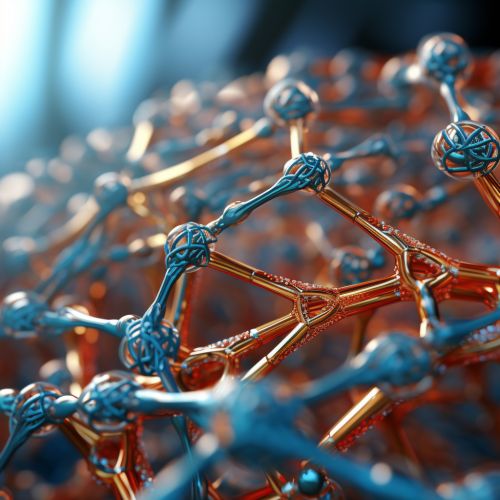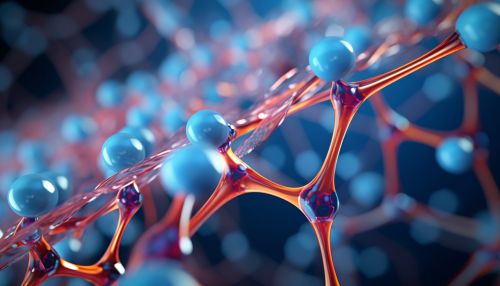RNA
Introduction
Ribonucleic acid (RNA) is a polymeric molecule essential in various biological roles in coding, decoding, regulation, and expression of genes. RNA and deoxyribonucleic acid are nucleic acids, and, along with proteins and carbohydrates, constitute the four major macromolecules essential for all known forms of life.


Structure
RNA is made by chains of nucleotides, which are composed of a sugar, a base, and a phosphate group. The sugar in RNA is ribose, which is why it is called ribonucleic acid. The bases in RNA are adenine, uracil, cytosine, and guanine. RNA is usually single-stranded, unlike DNA, which is double-stranded.
Types of RNA
There are three main types of RNA: messenger RNA (mRNA), transfer RNA (tRNA), and ribosomal RNA (rRNA). Each has a specific function in the process of protein synthesis.
Messenger RNA
mRNA carries the genetic information copied from DNA in the form of a series of three-base code “words,” each of which specifies a particular amino acid.
Transfer RNA
tRNA is the key to deciphering the code words in mRNA. Each type of amino acid has its own type of tRNA, which binds it and carries it to the growing end of a polypeptide chain if the next code word on mRNA calls for it.
Ribosomal RNA
rRNA associates with a set of proteins to form ribosomes. These complex structures, which physically move along an mRNA molecule, catalyze the assembly of amino acids into protein chains.
Functions of RNA
RNA plays a central role in the pathway from DNA to proteins, known as the "Central Dogma" of molecular biology. This involves two key processes: transcription and translation.
Transcription
Transcription is the process by which the information in a strand of DNA is copied into a new molecule of mRNA. This process is carried out by the enzyme RNA polymerase.
Translation
Translation is the process by which the information in mRNA is used to produce a protein. This process is carried out by the ribosome, which reads the sequence of the mRNA bases and, using the genetic code, translates it into a sequence of amino acids.
RNA in Disease and Medicine
RNA plays a significant role in many diseases and is a major focus of research in medicine. For example, many viruses, such as HIV/AIDS and flu, are RNA viruses. Additionally, RNA interference is a process that cells use to turn down, or silence, the activity of specific genes. This natural process is being studied for its potential uses in medicine.
